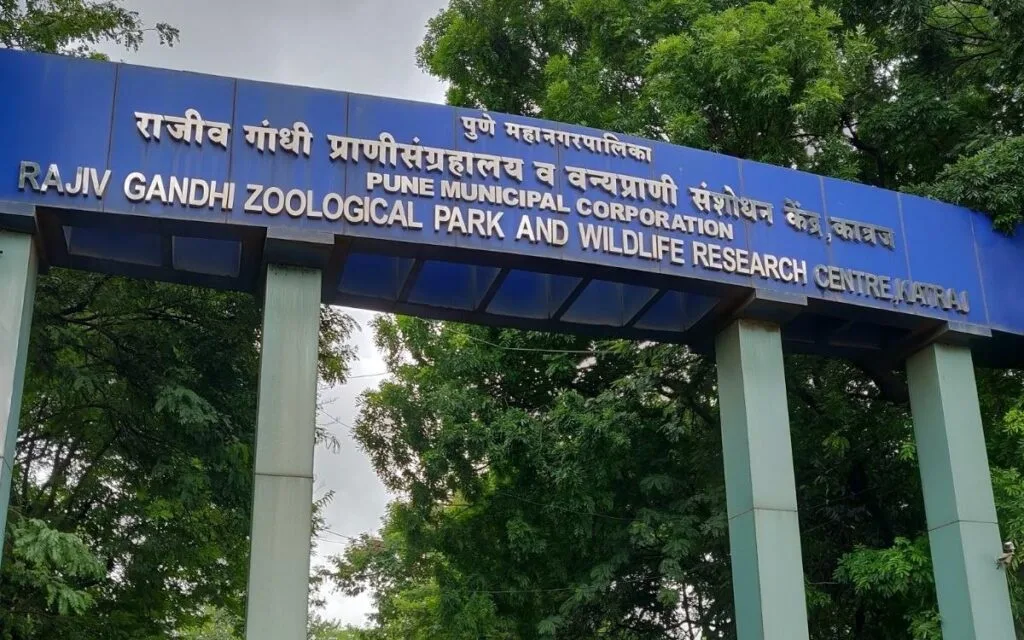
FMD outbreak claims 16 deer at Pune’s Katraj Zoo; investigation underway
By Prashant for PuneriPages.in
A tragic viral outbreak at Pune’s Rajiv Gandhi Zoological Park has claimed the lives of 16 spotted deer, with an official report now confirming Foot and Mouth Disease (FMD) as the cause. For many of us in Pune, this zoo isn’t just a weekend getaway spot—it’s a place we grew up visiting, a part of our city’s fabric. Which is why this news hits hard. And it demands more than just passive reporting.
Table of Contents
🔔 What We Know So Far
- What Happened: 16 spotted deer died at the Rajiv Gandhi Zoological Park (Katraj Zoo).
- Confirmed Cause: Foot and Mouth Disease (FMD), as per the official laboratory report.
- Immediate Action Taken: Zoo authorities have initiated quarantine protocols and begun an internal investigation.
- Public Impact: The zoo remains open to visitors, though certain areas housing hoofed animals may be restricted.
🗕️ What Is Foot and Mouth Disease (FMD)?
Foot and Mouth Disease is a highly contagious viral infection that primarily affects cloven-hoofed animals such as deer, cattle, goats, and pigs.
- Transmission: It spreads via contaminated fodder, water, surfaces, or even air over short distances.
- Impact: While not typically dangerous to humans, FMD can devastate animal populations and requires swift containment.
- Symptoms in Animals: Fever, blisters in the mouth and on feet, lameness, and loss of appetite.
🕵️️ Investigating the Outbreak: The Questions We Must Ask
As someone who cares about both animals and institutions of public trust, I can’t help but wonder—how does a contagious disease breach the barriers of a controlled environment like a zoo?
How Did FMD Enter the Zoo?
- Was contaminated fodder or water brought in from outside without proper testing?
- Do zoo staff or maintenance vehicles have unsanitized contact with external livestock environments?
- Were there breaches in standard biosecurity checks?
Was the Response Swift Enough?
- When was the first deer reported ill, and how quickly was action taken?
- Did delays in diagnosing the disease contribute to its spread?
Could This Have Been Prevented?
- Are regular vaccinations against FMD administered to deer and similar species?
- When were the last health screenings done, and what did they show?
- Were any warnings or symptoms overlooked by caretakers or veterinarians?
These aren’t just rhetorical questions. They represent very real accountability gaps that demand answers.
💬 Voices from the Ground
Official Statement:
Dr. Rajkumar Jadhav, Director of the Rajiv Gandhi Zoological Park, confirmed the deaths and stated that the disease was diagnosed through testing by the Pune-based Disease Investigation Section. He added that quarantine and disinfection protocols are now being enforced.
“We are conducting a thorough internal investigation and reviewing our biosecurity protocols to prevent further incidents,” said Dr. Jadhav.
Expert Perspective:
Dr. Nandini Awasthi, a Pune-based wildlife veterinarian and former consultant with the Central Zoo Authority (CZA), weighed in:
“FMD outbreaks in zoos are extremely rare and usually point to a breach in quarantine or sourcing practices. Every batch of fodder or external input must be rigorously tested. The real concern is whether standard procedures were skipped or delayed.”
She added that while the disease does not threaten big cats or primates, its rapid spread among ungulates like deer is a major red flag.
📈 What About the Other Animals?
This isn’t just about deer. As someone who recently took my niece to see the tigers and elephants here, I get why people are anxious.
Clarifying the Risk:
- FMD affects only cloven-hoofed animals. Big cats, birds, reptiles, and primates are not at risk.
Containment Measures Underway:
- Vaccination drives for other vulnerable hoofed animals.
- Full disinfection of enclosures, feeding equipment, and staff footwear.
- Heightened monitoring of all animals for early signs of infection.
- Restricted access to certain enclosures to minimize further risk.
✉️ Conclusion: A Preventable Tragedy?
The death of 16 deer in a city zoo shouldn’t just be a headline that fades away. It should be a loud, uncomfortable reminder that no institution—no matter how beloved—is above scrutiny.
If this outbreak was preventable (and the early signs suggest it might have been), then Pune deserves transparency, not silence. The zoo administration must not only investigate but also make their findings public. And going forward, stronger, better-enforced biosecurity protocols must become non-negotiable.
The lives lost can’t be brought back, but the remaining ones must be protected—with urgency, with care, and with accountability.






